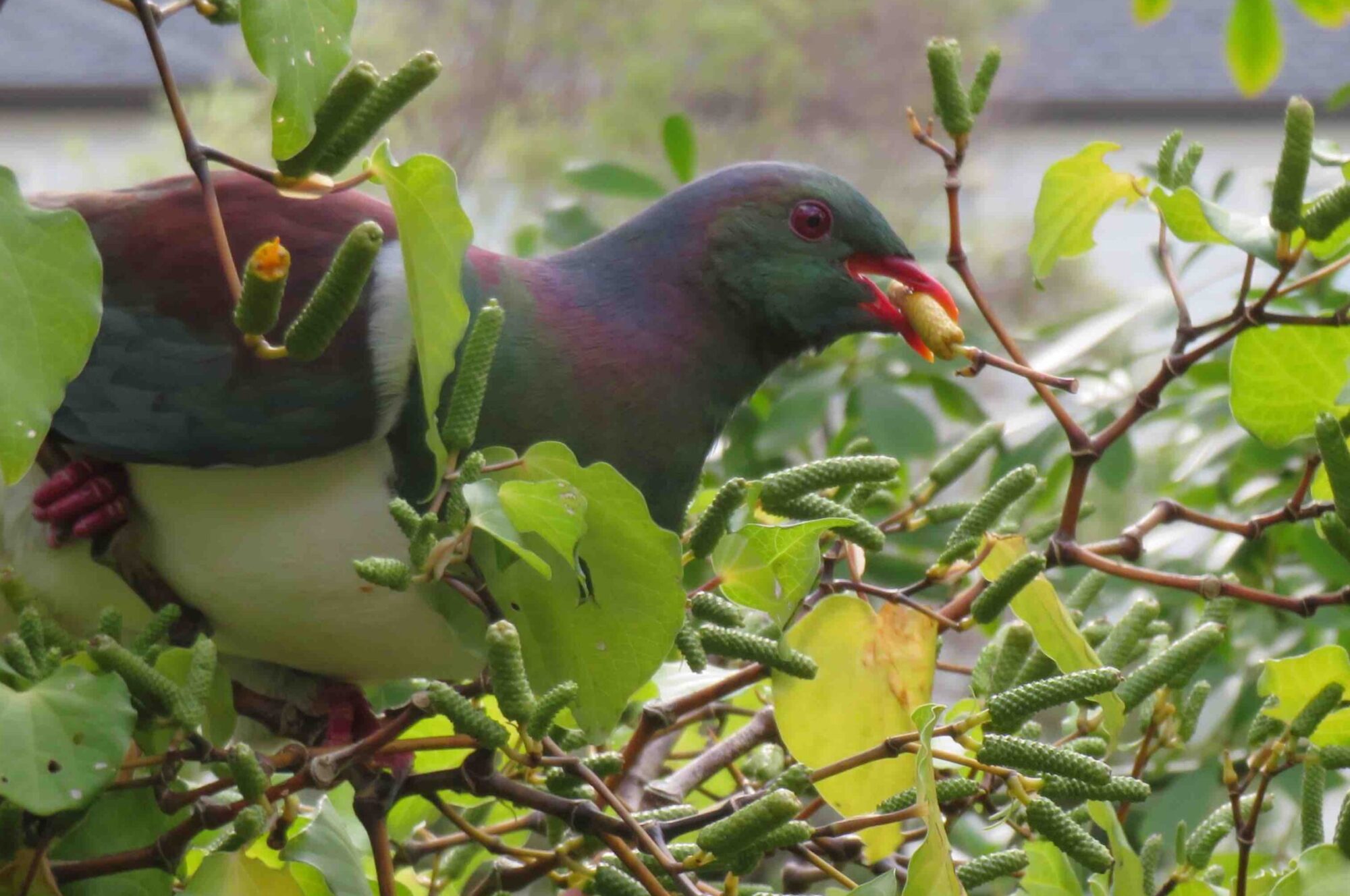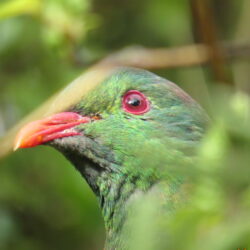Following the development of the kawakawa fruit observed in earlier posts, I noticed a few ripe fruit on the tree outside this dining room window.

In summer kereru clamber in the taller branches of the tree, alone, in pairs, and one year with a chick, all within a metre of this window.
Fortunately for the kereru, who are far too trusting for their own good, a dog keeps the garden cat-free, and the dog can’t reach this part of the garden.
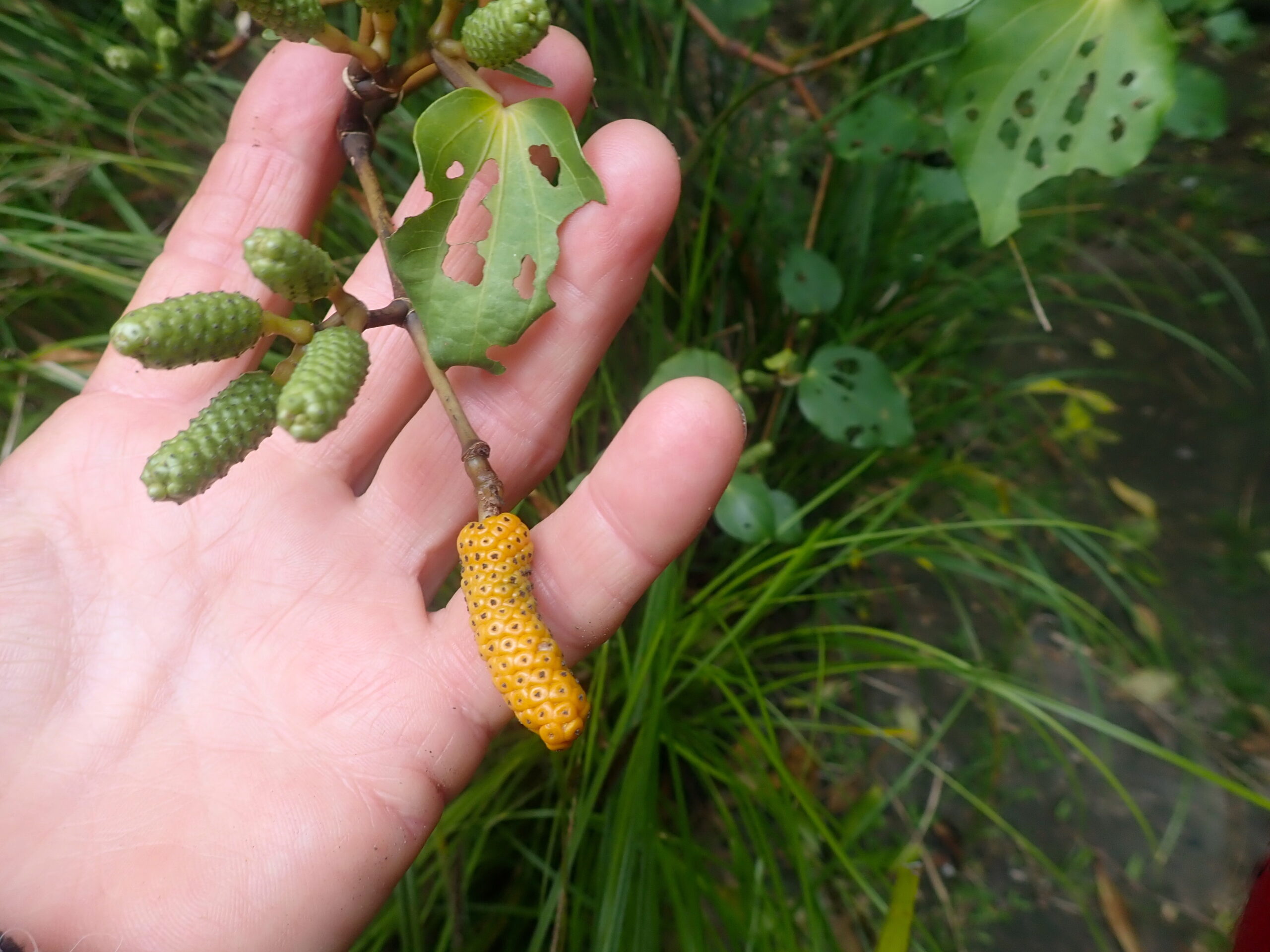
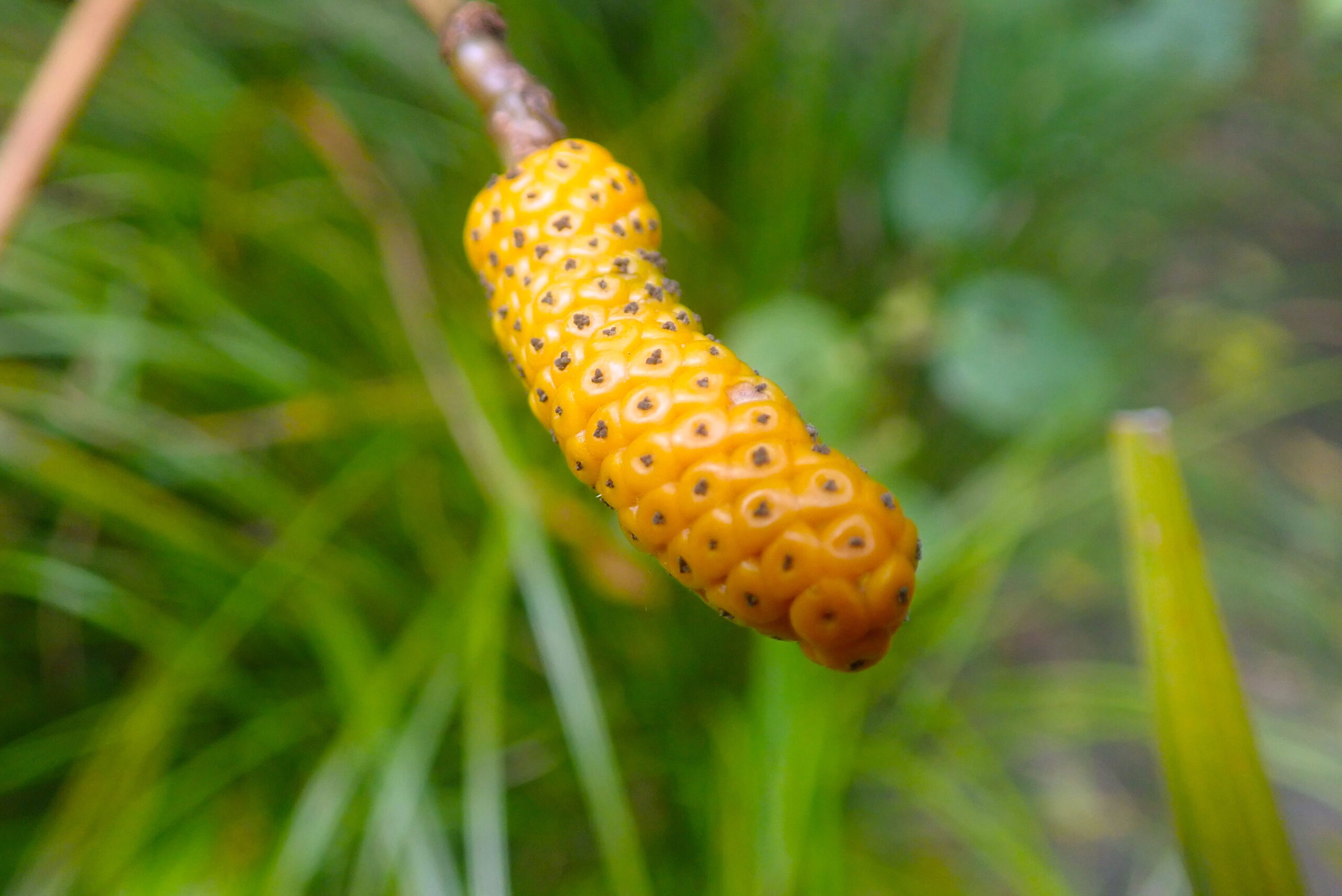
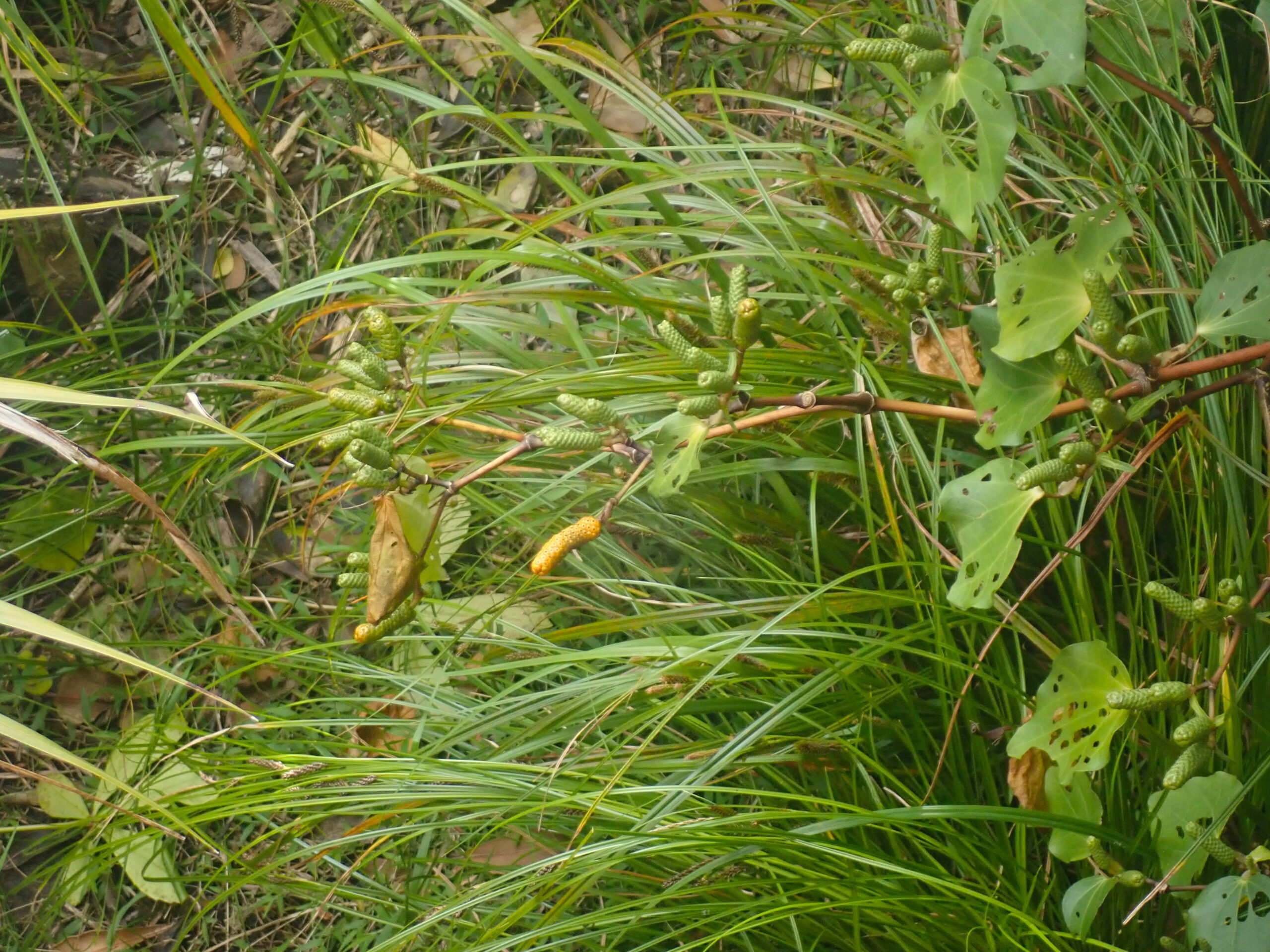
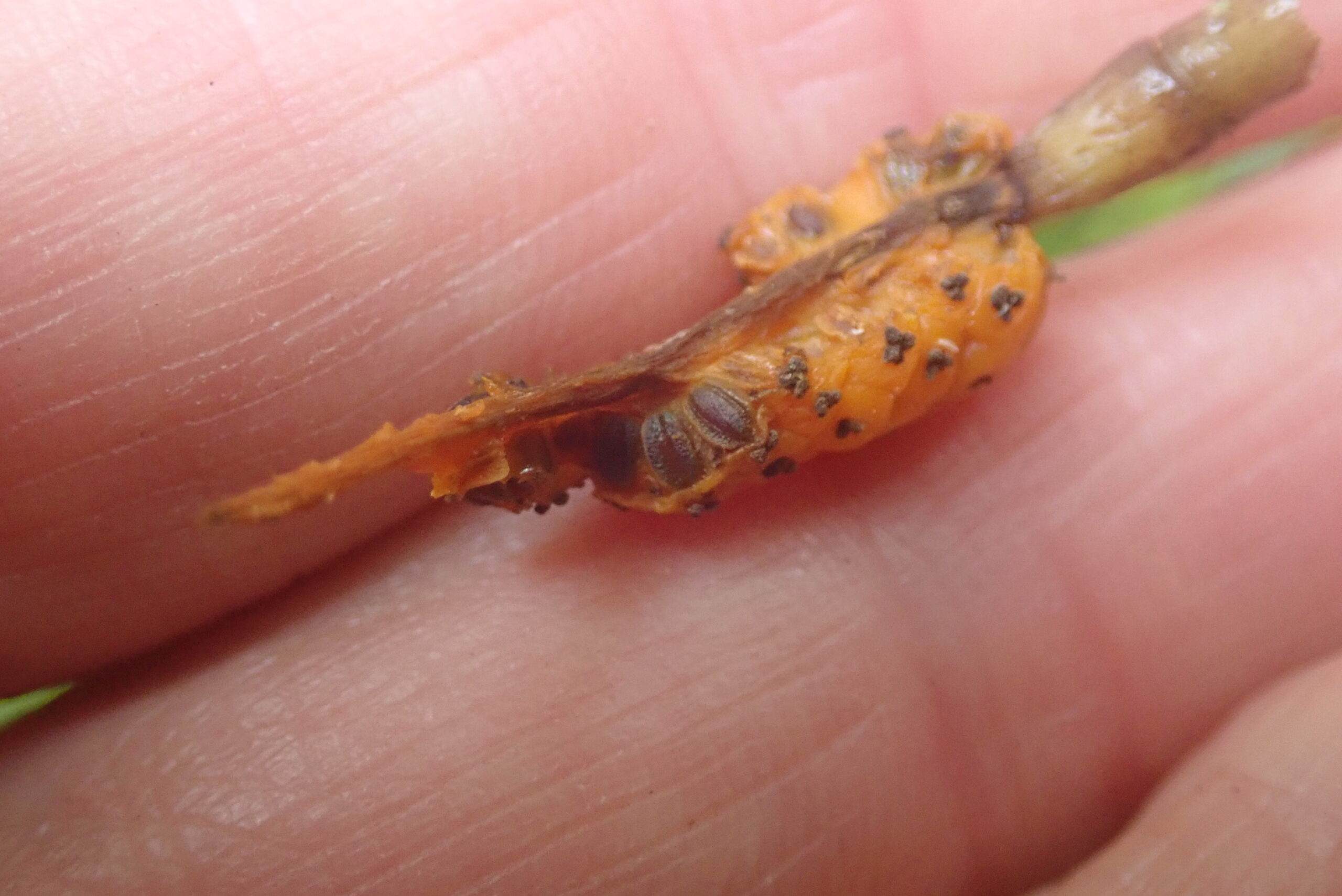
Above: a fully ripe kawakawa fruit, found half-eaten on the ground, discloses the many seeds within the orange flesh of a single fruit
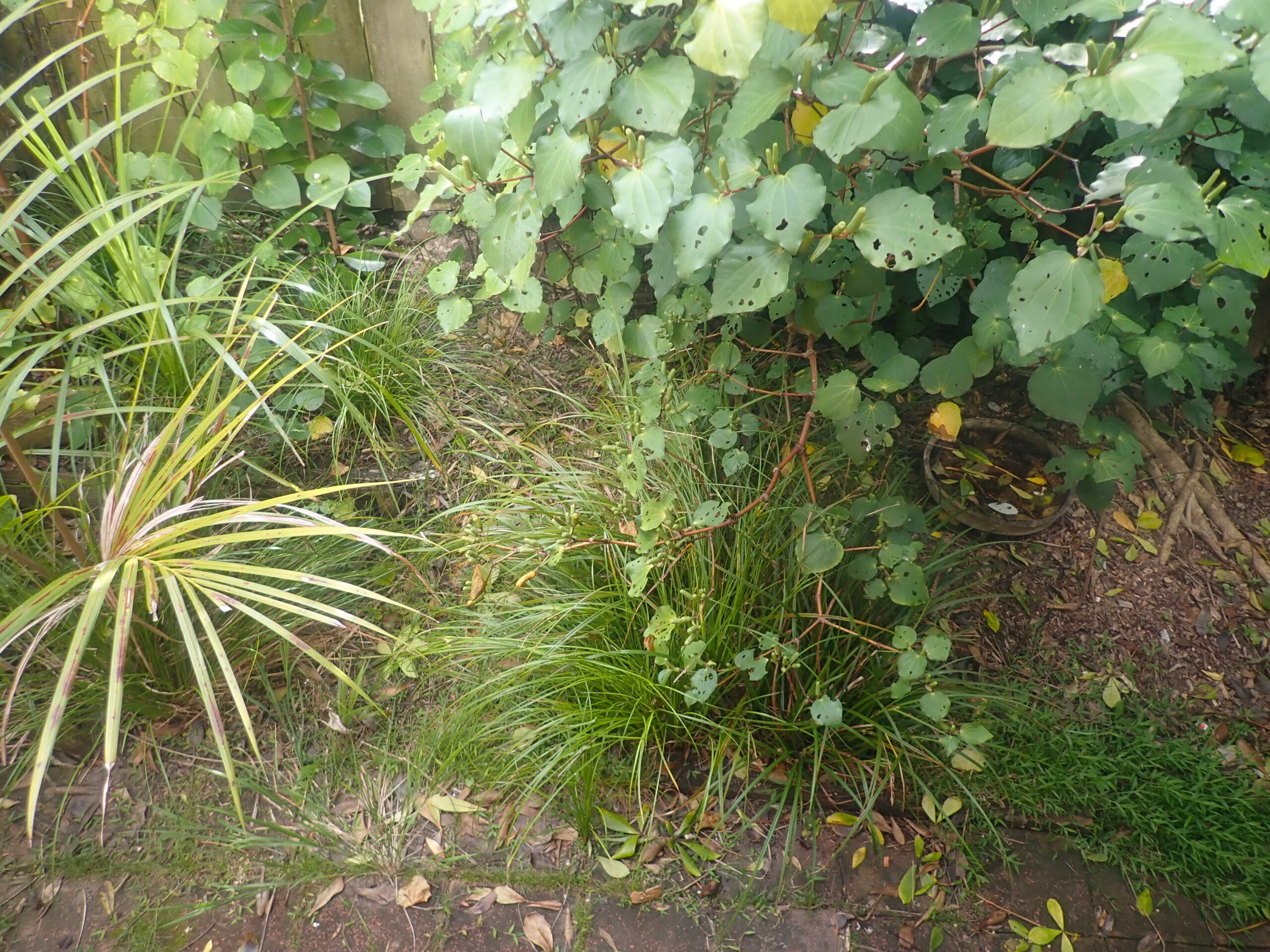
The wood of the kawakawa is soft, easily pruned to keep this paved path clear.
Wild native sedges and grasses and moss are allowed to cover the earth under the tree, and the smaller plants are allowed to spread to fill the gaps between paving tiles, keeping out most of the dandelions, creeping buttercup and other weeds.
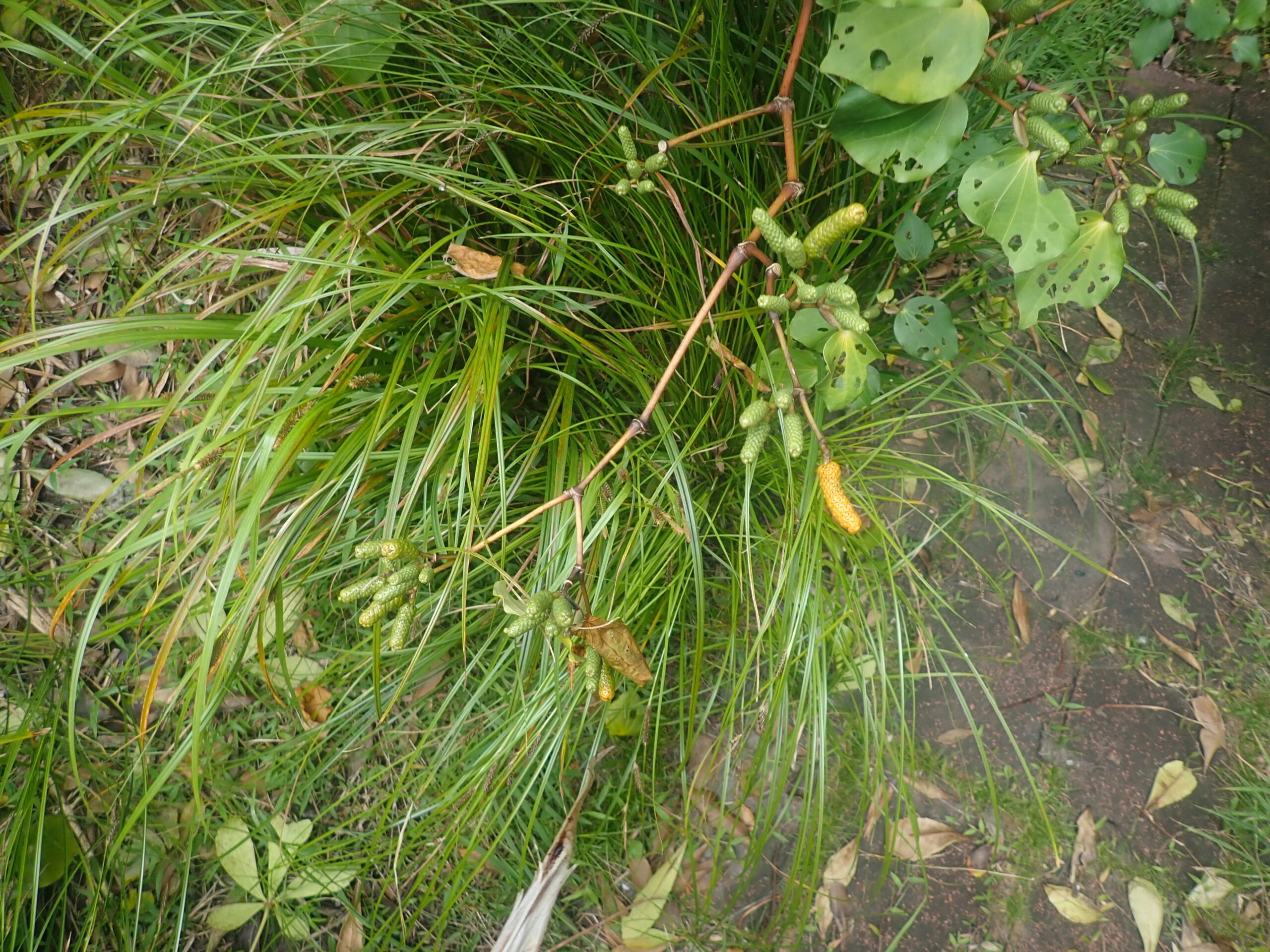

The native kawakawa looper makes holes in the kawakawa leaves.
These holes are said to correspond to the leaves with the strongest medicinal value, perhaps because of substances produced in those leaves in response to the caterpillars eating the leaves.
Another explanation is that the caterpillars know which leaves are the best to eat.
Either way, this 2 square metres of clay is cool and refreshing to look out on through hot summers, hosts a lot of wildlife, lets morning light play on the windows all year round, and, with fallen leaves and twigs mulching the ground naturally, requires almost no attention to stay beautiful and weed-free.
